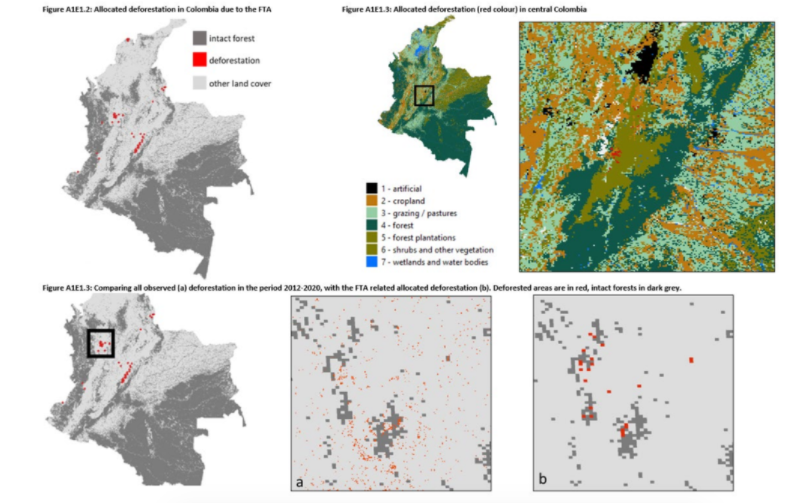Measurement of the trade-biodiversity nexus


· 3 min read
Biodiversity degradation is an under evaluated knock-on effect of trade liberalisation. That’s because enhanced demand through free trade agreements (FTAs) increases land clearing, whether that be due to agriculture, mining, fishing or hydrocarbon extraction. Costs on climate, linked to energy-intensive industrial production and freight transport, are also enormous. Since 2019, opposition to the EU-Mercosur deal has been rooted in the weakness of commitments against deforestation in Brazil. Conversely, biodiversity-related provisions were completely absent from CETA. These practices demonstrate the incompatibility between domestic engagements and Europe’s presence abroad. Today, Europe ‘imports’ 90% of its deforestation; there is a clear need to integrate beyond-the-border impact into accounting practices.

Aligning conservation and liberalisation stands high on the European Union’s trade agenda. On 19 May, the European Commission released a methodology for quantifying negative net impacts of trade on biodiversity. Through the methodology, FTA impact assessment will comprise of three core steps: 1) screening and scoping priority impacts, 2) choosing a method to measure the impacts, and 3) presenting the wider context for interpretation.
Application of the proposed method to the EU-Colombia FTA, for example, found the horticultural sector to be a priority impact area, due to immense pressure on land use conversion from coffee and cocoa production. Measurement of biodiversity impact was conducted through estimations from previous FTA land use change, as well as geospatial modelling (see picture below). Calculations found that FTA-induced output change resulted in 3,500-4,000 hectares of land being permanently deforested (0.5% of total agriculture-related deforestation). The step-by-step approach emphasises flexibility to accommodate FTAs with all countries, irrespective of both biodiversity intensity in a given geography and level of protection.

Trade is one of Europe’s primary economic policy instruments. Immense market size allows for an unequalled power of attraction, facilitating conditionality practices in bilateral or regional EU trade agreements. Trade tools integrating physical risk align European transition engagements at the domestic level with the bloc’s engagement in global value chains. They also serve as a diffusion lever, incentivising reciprocal uptake by trading partners. Most trade agreements today prioritise material factors over environmental ones. Without an adequate measurement of environmental effects and potential trade boundaries, European Green Deal commitments will fall short.
This latest methodology joins a host of proposed policies that seek to internationalise European Green Deal principles. Others include the border adjustment carbon tax and the sustainable finance taxonomy for third party investments. Europe must keep building momentum towards these potentially global norms; trade is of paramount importance in this regard.
Future Thought Leaders is a democratic space presenting the thoughts and opinions of rising Energy & Sustainability writers, their opinions do not necessarily represent those of illuminem.
John Leo Algo

Ethical Governance · Environmental Sustainability
Steven W. Pearce

Adaptation · Mitigation
illuminem briefings

Carbon · Environmental Sustainability
Euractiv

Carbon Market · Public Governance
Carbon Herald

Carbon Removal · Corporate Governance
CBC News

Carbon Market · Public Governance